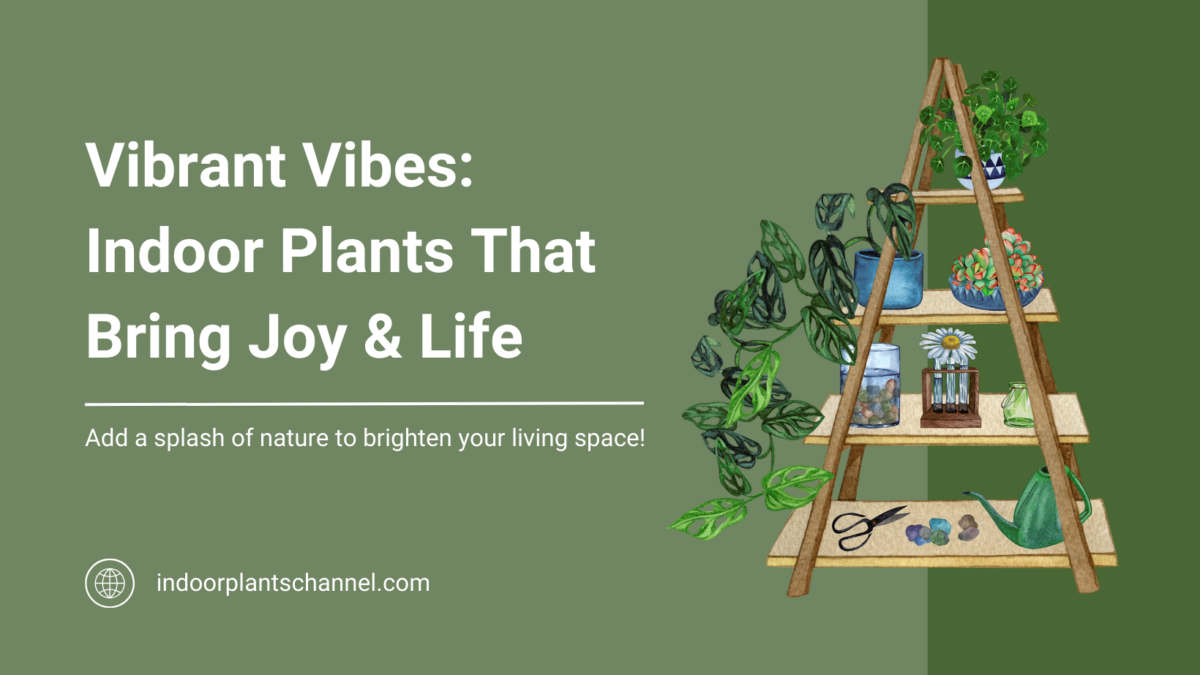Imagine this: according to the EPA, the air inside your apartment could be up to five times more polluted than the air outside. For urban dwellers, where outdoor greenery is often a luxury, this statistic feels both surprising and unsettling. Yet, the solution might be simpler than you think. Best Apartment Indoor Plants not only purify the air but also transform cramped, concrete spaces into calming, vibrant sanctuaries.
In a world where time is scarce and space even scarcer, the question arises: how can apartment dwellers reap the benefits of nature without adding to their already packed schedules? The answer lies in selecting the right plants—species that thrive with minimal care while offering maximum impact.
This guide explores how the right greenery can enhance your well-being, improve your living environment, and even challenge the way we think about urban living. Let’s dig in.
The Rise of Indoor Gardening in Urban Spaces
Urban gardening isn’t just a trend—it’s a response to the growing disconnect between city living and nature. With 68% of the global population projected to live in urban areas by 2050, the demand for green spaces has outpaced availability. Enter indoor gardening: a practical, scalable solution that transforms even the smallest apartments into lush, breathable environments.
What makes this movement thrive is its intersection with technology. Hydroponic systems, for instance, allow plants to grow without soil, using nutrient-rich water instead. This not only saves space but also reduces water usage by up to 90% compared to traditional methods. Meanwhile, smart gardening devices equipped with sensors and automation ensure optimal light, water, and nutrient levels, making plant care nearly foolproof.
Indoor gardening isn’t just about aesthetics. Studies show it improves air quality, reduces stress, and even boosts productivity. For urban dwellers, it’s more than a hobby—it’s a lifeline to nature.
Benefits of Indoor Plants for Apartment Living
Plants release moisture through a process called transpiration, which can counteract the dryness caused by indoor heating systems, especially in winter. This natural humidification not only improves comfort but also reduces the risk of respiratory issues and dry skin, common in low-humidity environments.
Moreover, the psychological impact of greenery in confined spaces is profound. Studies reveal that exposure to plants can lower cortisol levels, the hormone associated with stress, while enhancing focus and creativity. This makes them invaluable for remote workers or students managing high-pressure tasks in small apartments.
Group plants with varying transpiration rates to create microclimates tailored to your needs. For instance, pairing ferns with succulents balances humidity while maintaining low maintenance. By strategically integrating plants, you can transform your apartment into a healthier, more productive sanctuary.
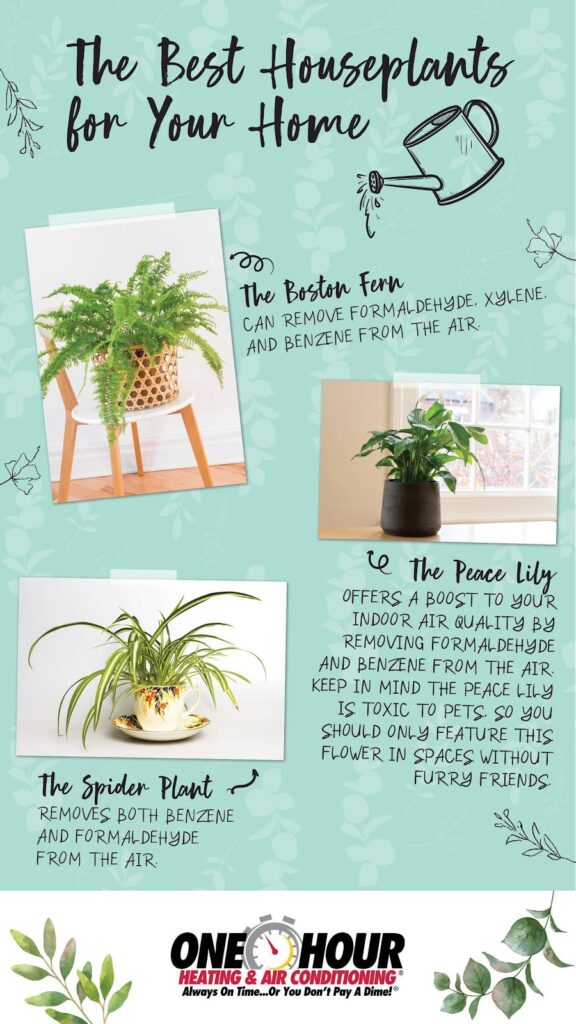
Understanding Low-Maintenance Indoor Plants
Low-maintenance indoor plants thrive on simplicity, but their resilience often masks the science behind their adaptability. These plants, like the Snake Plant and ZZ Plant, have evolved mechanisms such as CAM (Crassulacean Acid Metabolism) photosynthesis, allowing them to conserve water by opening their stomata at night. This makes them ideal for apartment dwellers who may forget to water regularly.
While these plants tolerate irregular care, factors like light placement and soil type still matter. For instance, overwatering remains the leading cause of plant failure, even for hardy species. Using tools like moisture meters can prevent this, offering a simple yet effective solution.
Think of low-maintenance plants as the “slow cookers” of the plant world—set them up correctly, and they’ll quietly enhance your space with minimal intervention. By understanding their needs, you can unlock their full potential with ease.
Defining Low-Maintenance in Horticulture
Low-maintenance in horticulture isn’t about plants that “survive anything”—it’s about aligning plant biology with human behavior. For example, succulents thrive in neglectful watering routines because their thick leaves store moisture, mimicking arid environments. This biological trait makes them perfect for busy urbanites who might forget their watering can.
Low-maintenance doesn’t mean “set and forget.” Light exposure plays a pivotal role. A Snake Plant, for instance, tolerates low light but grows faster in bright, indirect light. Misunderstanding this balance often leads to stunted growth, even in resilient species.
Plants adapt to your lifestyle, but you must meet their baseline needs. Tools like self-watering pots or apps that track light levels can bridge this gap. By leveraging these innovations, you’re not just growing plants—you’re cultivating a system that thrives on mutual simplicity.
Key Traits of Easy-Care Plants
Plants like the ZZ Plant and Pothos excel here due to their robust root systems, which store water and nutrients for extended periods. This adaptation mirrors survival strategies in drought-prone ecosystems, making them ideal for individuals with unpredictable routines.
While many assume low-light tolerance is universal, plants like the Peace Lily thrive in indirect light but falter in complete darkness. Pairing such plants with reflective surfaces or supplemental grow lights can enhance their performance in dim apartments.
Well-draining mixes with perlite or sand prevent root rot, a common issue in overwatered plants. By combining these traits with tools like moisture meters, you create a low-maintenance ecosystem that thrives with minimal intervention.
Assessing Your Apartment Environment
Poor ventilation can lead to stagnant air, which not only stifles plant growth but also encourages mold and pests. Incorporating small fans or opening windows periodically can mimic natural air circulation, promoting healthier plants and reducing the risk of fungal issues.
Another key consideration is the microclimates within your apartment. For instance, areas near heating vents or drafty windows can create temperature fluctuations that stress plants. Grouping plants with similar temperature tolerances in these zones can mitigate damage while optimizing growth conditions.
Many apartments rely on LED or fluorescent lights, which lack the full spectrum of sunlight. Using grow lights with adjustable spectrums can bridge this gap, ensuring plants receive the wavelengths they need for photosynthesis. By tailoring these environmental factors, you create a thriving indoor ecosystem with minimal effort.
Top Low-Maintenance Indoor Plants for Apartments
When it comes to low-maintenance indoor plants, the ZZ Plant stands out as a near-perfect option. Its waxy, deep-green leaves not only add a touch of elegance but also reflect its ability to store water efficiently. Think of it as the camel of the plant world—thriving on neglect and requiring watering only every few weeks. Studies even show it can survive in low-light conditions, making it ideal for dimly lit apartments.
Snake Plant actively improves air quality by converting CO2 into oxygen at night. This makes it a great companion for bedrooms, where fresh air can enhance sleep quality. Its upright, sword-like leaves also make it a space-saving choice for tight corners.
Pothos trailing vines adapt to various light conditions, and its air-purifying properties rival more demanding species. Together, these plants redefine simplicity in urban gardening.
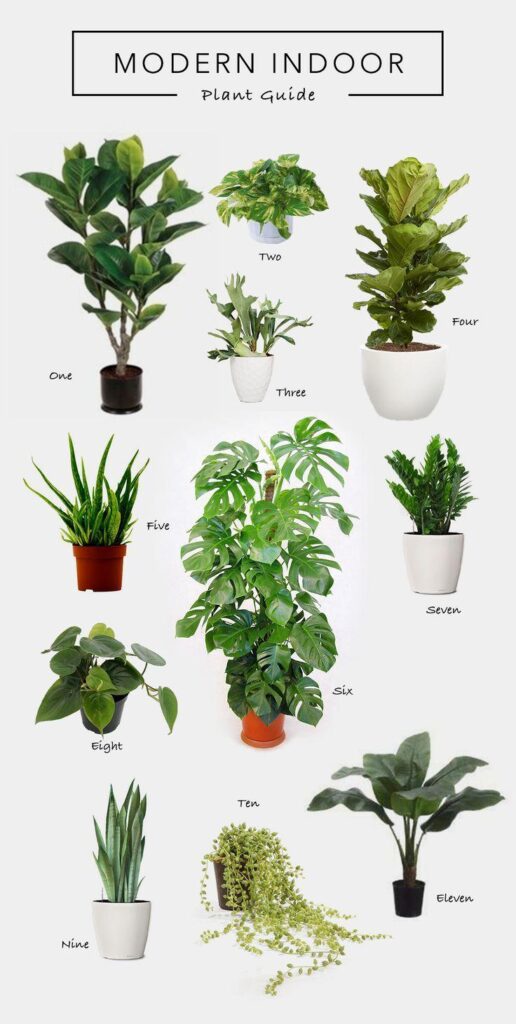
Snake Plant (Sansevieria): The Indestructible Choice
The Snake Plant thrives on a principle often overlooked in plant care: resilience through adaptation. Its thick, upright leaves are not just visually striking—they act as water reservoirs, enabling the plant to endure weeks without watering. This evolutionary trait, rooted in its West African origins, mirrors the survival strategies of desert flora, making it a natural fit for busy urban lifestyles.
What sets the Snake Plant apart is its ability to perform crassulacean acid metabolism (CAM) photosynthesis. Unlike most plants, it absorbs CO2 at night, improving indoor air quality while conserving water. This makes it a rare gem for bedrooms, where oxygen levels can directly impact sleep quality.
For pet owners, however, caution is key. While the plant is hardy, its saponins are toxic if ingested. Elevate it on a stylish stand, turning a potential hazard into a design feature. This blend of form and function cements its status as an apartment essential.
ZZ Plant (Zamioculcas zamiifolia): Thriving on Neglect
The ZZ Plant owes its reputation to its remarkable rhizome system, a biological adaptation that stores water and nutrients. This feature allows the plant to endure prolonged periods of drought, making it ideal for individuals with irregular watering habits. Its waxy, glossy leaves further minimize water loss through transpiration, a trait often seen in plants native to arid regions.
The ZZ Plant’s ability to thrive in low light is not just tolerance—it’s efficiency. Its chlorophyll-rich leaves maximize photosynthesis even in dim conditions, making it a standout choice for poorly lit apartments. This efficiency parallels advancements in solar panel technology, where maximizing energy capture in low-light environments is a key focus.
For optimal care, allow the soil to dry completely between waterings to prevent root rot. Pairing the ZZ Plant with self-watering pots can further reduce maintenance, offering a practical framework for integrating greenery into even the busiest lifestyles.
Pothos (Epipremnum aureum): The Adaptable Vine
The Pothos thrives on its ability to adjust growth patterns based on environmental conditions. In low light, it elongates its stems to maximize light capture, while in brighter settings, it produces denser foliage. This adaptability mirrors principles in ecological resilience, where organisms optimize resource use in fluctuating environments.
Pothos effectively absorbs volatile organic compounds (VOCs) like formaldehyde, a common pollutant in urban apartments. This makes it not just decorative but functional, contributing to healthier living spaces—a concept increasingly emphasized in biophilic design.
For propagation, its forgiving nature allows even beginners to succeed. Simply place a cutting in water, and roots will develop within weeks. To maximize its air-purifying potential, consider clustering multiple Pothos plants in high-traffic areas. This approach combines aesthetic appeal with tangible health benefits, offering a sustainable framework for urban living.
Spider Plant (Chlorophytum comosum): Air-Purifying Marvel
The Spider Plant excels in removing airborne toxins like carbon monoxide and formaldehyde, making it a cornerstone of indoor air purification. Its efficiency stems from a high transpiration rate, which not only filters pollutants but also increases indoor humidity—a critical factor in combating dry air caused by heating systems.
A unique feature is its self-propagating nature. The plant produces “spiderettes,” or offshoots, which can be easily replanted. This trait aligns with sustainable gardening practices, allowing urban dwellers to expand greenery without additional costs or effort. It’s a living example of circular design principles applied to horticulture.
For optimal results, place Spider Plants in areas with indirect light and moderate foot traffic, such as living rooms or kitchens. This positioning maximizes their air-cleaning potential while enhancing visual appeal. By integrating these plants into shared spaces, you create a healthier, more inviting environment that supports both well-being and sustainability.
Peace Lily (Spathiphyllum): Beauty with Minimal Effort
The Peace Lily thrives on its ability to signal care needs, making it ideal for beginners. Its leaves droop visibly when hydration is required, a natural feedback mechanism that prevents overwatering—a common pitfall in plant care. This biological cue simplifies maintenance, aligning with behavioral psychology principles by reinforcing consistent care routines.
Interestingly, the Peace Lily’s air-purifying capabilities extend beyond aesthetics. Studies, including NASA’s Clean Air Study, highlight its efficiency in removing toxins like benzene and formaldehyde. This makes it a functional addition to spaces prone to chemical pollutants, such as home offices or kitchens.
For enhanced growth, consider pairing Peace Lilies with humidity-boosting practices like misting or grouping with other plants. This mimics their native tropical environment, optimizing their health. By integrating these strategies, you not only elevate the plant’s longevity but also create a microclimate that benefits other greenery, fostering a thriving indoor ecosystem.
Succulents and Cacti: Desert Plants in Urban Homes
Succulents and cacti excel in urban apartments due to their CAM photosynthesis, a process that minimizes water loss by opening stomata at night. This adaptation not only conserves moisture but also makes them ideal for environments with inconsistent care routines. Pairing these plants with well-draining soil, such as a mix of sand and perlite, further mimics their arid origins, preventing root rot—a common issue in indoor settings.
LED grow lights emitting red and blue wavelengths can replicate desert sunlight, enabling healthy growth even in windowless apartments. This makes succulents and cacti versatile for modern urban dwellers.
For real-world applications, consider clustering varieties like Haworthia and Echeveria in shallow planters. This not only creates a striking visual display but also optimizes shared microclimates, reducing maintenance. By leveraging these strategies, you transform these desert plants into resilient, low-maintenance urban companions.
Chinese Evergreen (Aglaonema): Low Light Specialist
The Chinese Evergreen thrives in low-light conditions due to its broad, variegated leaves, which maximize light absorption even in dim environments. This makes it a standout choice for apartments with limited natural light. However, its adaptability goes beyond light tolerance—Aglaonema also excels in filtering airborne toxins like benzene and formaldehyde, contributing to healthier indoor air quality.
Using a well-draining potting mix, such as one enriched with peat moss, ensures proper moisture retention without waterlogging. Pairing this with a watering schedule that allows the soil to dry out between sessions prevents root rot, a common issue in low-light plants.
For practical applications, place Aglaonema in spaces like bathrooms or hallways where light is scarce. Its ability to thrive in high-humidity environments further enhances its versatility. By understanding these nuances, you can unlock its full potential as a resilient, air-purifying indoor plant.
Cast Iron Plant (Aspidistra elatior): Resilience in Leafy Form
The Cast Iron Plant’s resilience lies in its ability to tolerate extreme neglect, a trait rooted in its slow metabolic rate and robust leaf structure. Unlike many houseplants, it thrives in low-light conditions while enduring irregular watering schedules. This makes it an ideal candidate for spaces like north-facing rooms or offices with artificial lighting.
Preference for cooler temperature aligns with its natural habitat. Positioning it away from heat sources like radiators prevents leaf browning, a common issue in temperature-sensitive plants. Additionally, its tolerance for poor soil quality means it can adapt to a variety of potting mixes, provided they offer adequate drainage.
In real-world applications, the Cast Iron Plant is perfect for high-traffic areas where other plants might struggle. Its air-purifying capabilities further enhance its value, making it a practical and aesthetic solution for urban living challenges.
Optimizing Your Apartment for Plant Growth
Creating a plant-friendly apartment is less about space and more about strategic adjustments. Start by identifying microclimates—those warm, humid corners near kitchens or cooler, shaded spots by windows. Think of your apartment as a patchwork quilt, where each square offers unique conditions for different plant species.
For example, a study by NASA highlights how plants like the Snake Plant thrive in low-light, high-CO2 environments, making them perfect for bedrooms. Meanwhile, tropical plants such as Peace Lilies benefit from humidity hacks like placing water trays nearby or grouping them together to mimic rainforest conditions. These small tweaks can dramatically improve plant health.
Indirect light often prevents leaf scorch and promotes balanced growth. Use tools like grow lights or reflective surfaces to amplify light in darker areas. By tailoring your apartment’s environment, you create a thriving indoor ecosystem with minimal effort.
Maximizing Natural Light in Small Spaces
The key to maximizing natural light lies in manipulating its flow and intensity. Start by using reflective surfaces—mirrors, metallic decor, or even glossy furniture—to bounce light deeper into the room. A well-placed mirror opposite a window can double the perceived brightness, creating an illusion of space while benefiting light-hungry plants like Pothos or Spider Plants.
Heavy drapes block light, but sheer curtains or frosted films diffuse sunlight, reducing harsh glare while maintaining brightness. This approach not only supports plant growth but also protects delicate foliage from scorching.
For real-world impact, consider the angle of sunlight throughout the day. South-facing windows provide consistent light, ideal for succulents, while east-facing ones suit morning-light lovers like Peace Lilies. By aligning plant placement with these natural rhythms, you create a dynamic, light-optimized environment that fosters both aesthetic and botanical harmony.
Utilizing Artificial Lighting Solutions
The effectiveness of artificial lighting hinges on matching light spectra to plant needs. Red and blue wavelengths are critical for photosynthesis, with red promoting flowering and blue encouraging vegetative growth. LED grow lights, which allow precise spectral tuning, outperform traditional options by delivering targeted wavelengths without wasting energy on unnecessary spectra.
Positioning lights 6–12 inches above plants ensures optimal intensity while preventing heat stress. For example, adjustable LED panels can be raised as plants grow, maintaining consistent light exposure. This adaptability makes LEDs ideal for compact apartments where space is at a premium.
Photoperiod—plants thrive when exposed to 12–16 hours of light daily, mimicking natural cycles. Using timers to automate this schedule not only supports plant health but also simplifies care routines. By integrating these strategies, artificial lighting becomes a powerful tool for cultivating vibrant indoor greenery, even in the darkest corners.
Managing Humidity and Temperature Indoors
Tropical plants, for instance, thrive in 50–70% humidity, but indoor heating systems can drop levels to 30% or lower. A simple yet effective solution is grouping plants together, creating a microclimate where transpiration raises local humidity. Adding water trays or using pebble-filled saucers beneath pots further amplifies this effect.
Fluctuations between day and night can stress plants, especially those sensitive to cold drafts near windows. Placing plants away from vents and insulating windows with thermal curtains can stabilize conditions. For apartments with limited control over heating, investing in a small humidifier ensures both temperature and humidity remain optimal.
By regulating humidity and temperature, they create feedback loops that benefit both their growth and your comfort. Leveraging these dynamics transforms your apartment into a thriving ecosystem.
Space-Saving Techniques: Vertical Gardening and More
Vertical gardening isn’t just about saving space—it’s about optimizing it. By using trellises, wall-mounted planters, or modular systems, you can transform underutilized vertical surfaces into lush, productive areas. For example, pocket planters filled with herbs like basil or trailing plants like pothos can turn a blank wall into a living tapestry, enhancing both aesthetics and air quality.
The science behind vertical gardening lies in maximizing light exposure. Plants at varying heights receive more even light distribution, reducing competition and promoting healthier growth. This approach is particularly effective in apartments with limited natural light, where reflective surfaces or grow lights can amplify the benefits.
Vertical setups naturally improve airflow around plants, reducing the risk of mold and pests. By integrating drip irrigation or self-watering systems, you can further streamline maintenance, making vertical gardening a practical and visually striking solution for urban living.
Advanced Care Techniques for Thriving Plants
Thriving plants aren’t just about survival—they’re about creating synergy between nature and nurture. One advanced technique is dynamic watering, where you adjust frequency based on seasonal changes and plant growth stages. For instance, a study on tropical species showed that reducing watering in winter prevents root rot, while increasing it during spring growth boosts vitality.
Dust accumulation blocks light absorption, reducing photosynthesis efficiency. Regularly wiping leaves with a damp cloth mimics rain’s natural cleaning effect, ensuring optimal growth. Think of it as giving your plants a “spa day” to rejuvenate their energy.
Experts liken it to trimming hair—removing overgrown roots encourages healthier nutrient uptake. Pair this with fresh soil to replenish depleted nutrients, and you’ve got a recipe for robust, thriving greenery. These techniques elevate care from routine to transformative, ensuring your plants flourish year-round.
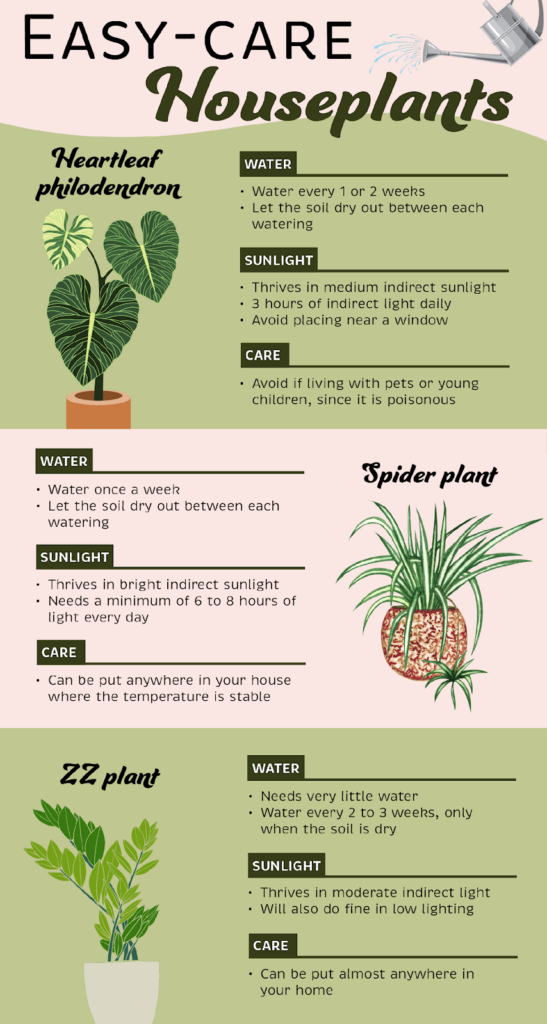
Selecting the Right Soil and Containers
The interplay between soil composition and container choice is often underestimated but critical for plant health. Soil aeration is a prime example—using a mix of perlite and organic matter like compost ensures roots receive oxygen while retaining moisture. Research shows that poorly aerated soil can reduce root respiration by up to 40%, stunting growth.
Clay pots, for instance, are porous, allowing excess moisture to evaporate, which is ideal for plants prone to overwatering. In contrast, plastic pots retain moisture longer, making them better suited for drought-tolerant species like succulents. Always prioritize containers with drainage holes to prevent waterlogging and root rot.
For a practical framework, match soil and container properties to your plant’s natural habitat. Tropical plants thrive in moisture-retentive mixes and glazed pots, while desert plants prefer fast-draining soil in breathable containers. This tailored approach transforms plant care into a science-backed art.
Efficient Watering Practices
Watering in the early morning allows plants to absorb moisture before the day’s heat causes evaporation, reducing water waste. Studies suggest that morning watering also minimizes fungal growth, as leaves dry faster compared to evening sessions.
Tap water with high chlorine or fluoride levels can harm sensitive plants like Peace Lilies. Using filtered or rainwater not only prevents chemical buildup but also mimics natural hydration conditions, promoting healthier growth.
Bottom watering ensures roots absorb water directly, preventing surface-level saturation and reducing the risk of root rot. Pair this with a moisture meter to fine-tune your schedule based on real-time soil conditions. By integrating these practices, you create a sustainable watering routine that aligns with both plant biology and urban living constraints.
Fertilization Strategies for Minimal Maintenance
Slow-release fertilizers are a cornerstone of low-maintenance plant care. These granules gradually release nutrients over weeks or months, reducing the need for frequent applications. This approach not only saves time but also prevents nutrient overload, which can lead to root damage or salt buildup in the soil.
For urban gardeners, integrating organic fertilizers like worm castings or compost tea offers dual benefits: enriching the soil microbiome and providing a steady nutrient supply. Unlike synthetic options, organic fertilizers improve soil structure over time, fostering long-term plant health.
During active growth phases, plants benefit from balanced fertilizers, while dormant periods require reduced feeding. Pairing this with a biannual soil refresh ensures nutrient availability without over-fertilization. By adopting these strategies, you create a sustainable fertilization framework that aligns with the natural rhythms of your plants, minimizing effort while maximizing vitality.
Preventing and Managing Pests and Diseases
Integrated Pest Management (IPM) is a game-changer for urban gardeners. By combining prevention, monitoring, and targeted control, IPM minimizes reliance on chemical pesticides. For instance, introducing beneficial insects like ladybugs or lacewings can naturally suppress aphid populations, creating a balanced ecosystem within your indoor garden.
Regularly inspecting plants for subtle signs—like discolored leaves or sticky residue—can prevent infestations from escalating. Pairing this with environmental adjustments, such as improving airflow or reducing overwatering, addresses root causes rather than symptoms.
For fungal issues, neem oil or baking soda sprays offer effective, non-toxic solutions. However, conventional wisdom often ignores the role of plant diversity. Mixing pest-resistant species like marigolds with vulnerable plants can deter pests while enhancing overall resilience. By adopting these proactive strategies, you not only protect your plants but also foster a healthier indoor environment.
Integrating Plants into Urban Lifestyles
Incorporating plants into urban living isn’t just about aesthetics—it’s about redefining how we interact with our spaces. Studies show that even a single plant can reduce indoor air pollutants like benzene and formaldehyde by up to 87% in 24 hours, according to NASA’s Clean Air Study. This makes plants not just decorative but functional, transforming apartments into healthier, more livable environments.
For busy professionals, low-maintenance plants like ZZ Plants or Snake Plants act as “green companions,” thriving with minimal care. Think of them as the ultimate roommates—quiet, undemanding, and always improving the atmosphere. Pairing these plants with smart gardening tools, such as self-watering pots or app-connected moisture sensors, bridges the gap between nature and technology.
Vertical gardens and hanging planters challenge this notion, proving that even the smallest apartments can host lush greenery. By integrating plants thoughtfully, urban dwellers can create a sanctuary that balances functionality and beauty.
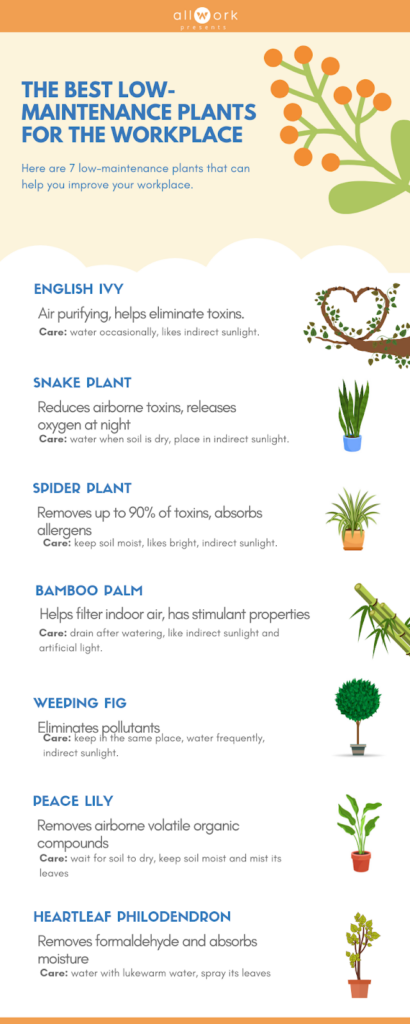
Incorporating Greenery into Interior Design
Plants are more than accents—they’re dynamic design elements that shape how we experience space. For instance, pairing trailing Pothos with minimalist metal planters creates a striking contrast between organic forms and industrial materials, a hallmark of modern interior design. This interplay of textures not only enhances visual appeal but also introduces a sense of balance, softening sharp architectural lines.
Positioning plants like Snake Plants near reflective surfaces amplifies natural light, creating an illusion of depth in small apartments. This technique, often used in Scandinavian design, maximizes brightness while maintaining a clean aesthetic.
Consider integrating greenery into furniture. Coffee tables with built-in planters or wall-mounted shelves for cascading Spider Plants blur the line between utility and decoration. These approaches challenge the notion that plants are secondary to design, proving they can be integral to both form and function.
Psychological and Health Benefits of Indoor Plants
By improving air quality and increasing humidity, plants like Peace Lilies reduce symptoms such as headaches and fatigue, which are common in poorly ventilated urban apartments. This physiological impact is complemented by their psychological benefits, as studies show that greenery can lower cortisol levels, fostering a calmer mental state.
The tactile interaction with plants—like pruning or watering—activates sensory pathways linked to relaxation. This connection aligns with principles of occupational therapy, where engaging with nature-based tasks improves emotional resilience. For example, tending to a ZZ Plant can serve as a micro-meditation, offering a moment of mindfulness in a hectic day.
To amplify these benefits, consider clustering plants in high-traffic areas. This not only enhances air purification but also creates restorative “green zones,” transforming mundane spaces into wellness hubs.
Sustainable Urban Living Through Plant Care
While traditionally associated with outdoor gardening, pairing plants like Pothos and Spider Plants indoors can create a symbiotic micro-ecosystem. Pothos excels at absorbing VOCs, while Spider Plants release moisture, collectively improving air quality and humidity levels without additional energy inputs.
This approach mirrors ecological principles seen in permaculture, where diverse species support each other’s growth. For instance, grouping plants with complementary transpiration rates reduces the need for artificial humidifiers, cutting energy consumption. Real-world applications include using these clusters in urban offices to enhance employee well-being while lowering HVAC system strain.
To implement this, start small: identify plants with compatible needs and place them in shared containers or close proximity. This not only optimizes care routines but also aligns with broader sustainability goals, making plant care a cornerstone of eco-conscious urban living.
Emerging Trends and Innovations
The intersection of technology and indoor gardening is reshaping how we care for low-maintenance plants. Smart gardening devices, like automated irrigation systems and app-connected moisture sensors, are now mainstream. For example, systems such as Click and Grow use AI to monitor soil conditions, ensuring plants like Snake Plants or ZZ Plants thrive with minimal human intervention.
Another trend gaining traction is bioadaptive lighting. These LED systems mimic natural sunlight cycles, promoting healthier growth for plants in dimly lit apartments. Studies show that plants exposed to dynamic light spectrums grow 30% faster compared to static lighting, making this innovation a game-changer for urban dwellers.
Edible indoor plants are also entering the low-maintenance category. Herbs like mint and basil, when grown hydroponically, require less water and care than traditional methods. This shift not only enhances sustainability but also bridges the gap between aesthetic and functional indoor gardening.
Smart Technology in Indoor Gardening
Smart technology is revolutionizing indoor gardening by addressing the most common pain points: inconsistent care and limited environmental control. Self-watering systems, for instance, use sensors to detect soil moisture and deliver precise hydration. This eliminates the guesswork, especially for plants like Peace Lilies, which are sensitive to overwatering. Studies show these systems reduce water usage by up to 50%, making them both efficient and eco-friendly.
Devices equipped with cameras and machine learning algorithms can identify early signs of stress, such as discoloration or drooping leaves. This proactive approach prevents issues like root rot before they escalate, saving time and effort for apartment dwellers.
These technologies also integrate with smart home ecosystems. Imagine your humidifier syncing with a sensor to maintain optimal humidity for a Chinese Evergreen. This seamless automation not only simplifies care but also enhances plant health, redefining what “low-maintenance” truly means.
Community Initiatives and Urban Gardening Movements
One standout aspect of urban gardening movements is the rise of community-supported agriculture (CSA) hubs in dense urban areas. These initiatives pool resources to create shared gardening spaces, often transforming underutilized lots into thriving green ecosystems. By distributing responsibilities like planting, watering, and harvesting, CSAs reduce individual workload while fostering collective ownership. This model not only democratizes access to fresh produce but also strengthens social bonds, as evidenced by studies linking community gardens to reduced urban isolation.
Educational workshop teaches participants sustainable practices like composting and vertical gardening, empowering them to replicate efforts at home. For example, rooftop gardens in Istanbul’s Kuzguncuk neighborhood double as learning centers, blending environmental stewardship with cultural preservation.
To scale these movements, cities can adopt frameworks that incentivize participation, such as tax breaks for landowners who allocate space for community gardens. This approach aligns urban development with sustainability, creating a blueprint for greener, more connected cities.
Exploring Rare and Unusual Low-Maintenance Plants
One fascinating category of rare low-maintenance plants is asthenia-tolerant species, such as the Lithops, also known as “living stones.” These succulents mimic the appearance of pebbles, an evolutionary adaptation to deter herbivores in their native arid environments. Their ability to thrive on minimal water and indirect light makes them ideal for urban apartments, where space and natural light are often limited. Unlike traditional succulents, Lithops require precise watering schedules, typically once every few months, aligning with their natural dormancy cycles.
A lesser-known factor influencing their success indoors is the use of mineral-rich substrates. These soils replicate their native habitat, preventing overhydration and promoting root health. For instance, urban gardeners in Tokyo have adopted pumice-based mixes to cultivate Lithops in compact spaces, achieving remarkable longevity.
To integrate such plants effectively, consider pairing them with decorative gravel arrangements. This not only enhances aesthetics but also reinforces their low-maintenance appeal, offering a sustainable design solution for modern interiors.
FAQ About Best Apartment Indoor Plants
1. What are the best low-maintenance indoor plants for small apartments?
The best low-maintenance plants include the ZZ Plant (thrives in low light, requires minimal watering), Snake Plant (tolerates neglect, improves air quality), Pothos (adaptable, grows in various light conditions), Spider Plant (self-propagates, purifies air), and Succulents (drought-tolerant, stylish, and easy to maintain).
2. How do I choose the right indoor plant for low-light conditions?
Opt for plants that naturally thrive in shade, such as the Snake Plant, ZZ Plant, Pothos, and Chinese Evergreen. These plants require little sunlight and still grow well, making them perfect for dimly lit apartments.
3. What are the most effective watering techniques for low-maintenance plants?
Let soil dry between watering to prevent root rot. Self-watering planters ensure consistent moisture, while moisture meters help gauge watering needs. Bottom watering works well for succulents, allowing roots to absorb water without over-saturating the soil.
4. How can I improve air quality in my apartment using indoor plants?
Air-purifying plants like Snake Plant, Spider Plant, Peace Lily, Pothos, and ZZ Plant remove toxins such as formaldehyde and benzene. Placing them in poorly ventilated areas can enhance air quality and humidity.
5. What are the common mistakes to avoid when caring for low-maintenance plants?
Avoid overwatering, improper light placement, neglecting dust buildup on leaves, and failing to rotate plants for even growth. Also, prune dead leaves regularly to promote healthier foliage.
Conclusion
Low-maintenance indoor plants are more than just decorative elements; they are silent allies in creating healthier, more sustainable apartment living. Studies from NASA’s Clean Air Study reveal that plants like the Snake Plant and Peace Lily can remove up to 87% of toxins in the air within 24 hours, making them indispensable for urban dwellers. Yet, their benefits extend beyond air purification—these plants also foster mindfulness, much like a living, breathing form of meditation.
Even the hardiest plants, such as the ZZ Plant, require thoughtful placement and occasional care. Think of them as slow-cooking meals: minimal effort, but attention to detail ensures success.
By integrating these plants into your apartment, you’re not just enhancing aesthetics—you’re cultivating a micro-ecosystem that supports well-being, productivity, and sustainability. In the end, these green companions prove that simplicity and impact can coexist beautifully.
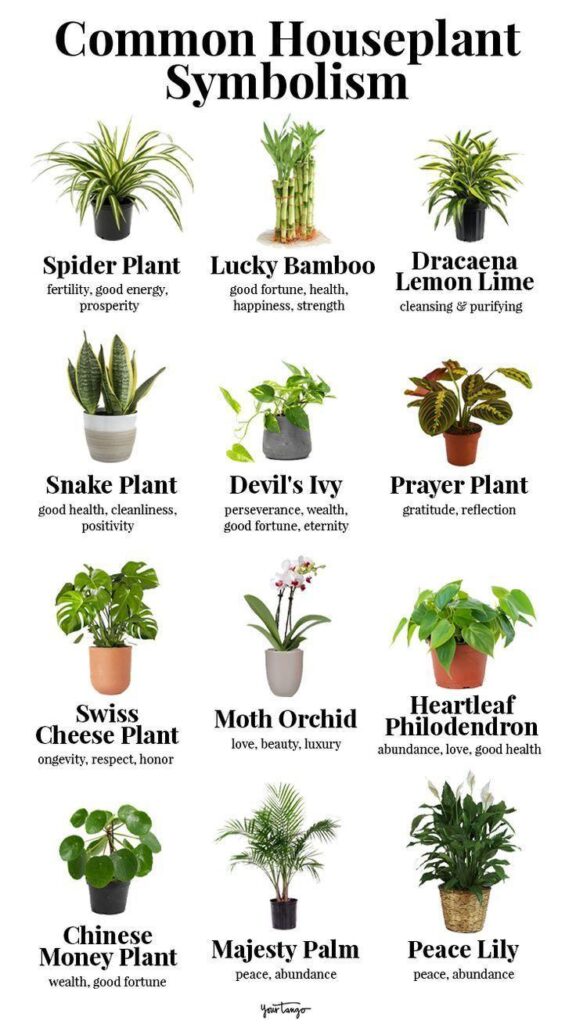
Embracing Green Living in Urban Spaces
Urban spaces often feel disconnected from nature, but integrating low-maintenance plants bridges this gap while addressing unique challenges like limited light and space. For instance, vertical gardening—using wall-mounted planters or hanging systems—maximizes greenery without encroaching on precious floor area. This approach not only enhances air circulation but also creates a layered aesthetic that mimics natural ecosystems.
Interestingly, research highlights that grouping plants with similar needs, such as succulents and cacti, fosters microclimates that stabilize humidity and temperature. This principle, borrowed from permaculture, reduces individual plant stress and simplifies care routines.
Conventional wisdom suggests urban gardening is resource-intensive, but innovations like self-watering planters and LED grow lights prove otherwise. These tools optimize water and energy use, making green living both sustainable and accessible. By rethinking how we incorporate plants, urban dwellers can transform apartments into thriving, eco-friendly sanctuaries—one pot at a time.
Related posts
![]()
About Michelle Wilde
Michelle Wilde is a stay-at-home mom and avid plant lover. Armed with a post-graduate degree in Computer Science (no kidding!), she loves researching plants and landscapes. When she is not caring for her 4 kids, she spends time on her passion for plants. She blogs at www.indoorplantschannel.com, the trusted source for indoor plants.
Learn more
Subscribe
* You will receive the latest posts and updates about indoor plants!
Search
Recent Posts
Categories
- Beginner Guides (10)
- FAQ (206)
- General (2)
- How-To Guides (212)
- Indoor Plants (214)
- Pest Management (2)
- Plant Problem Solutions (4)
- Seasonal Growing (2)
- Specialized Environments (2)
- Specific Plant Care (3)
- Technical Growing (2)
